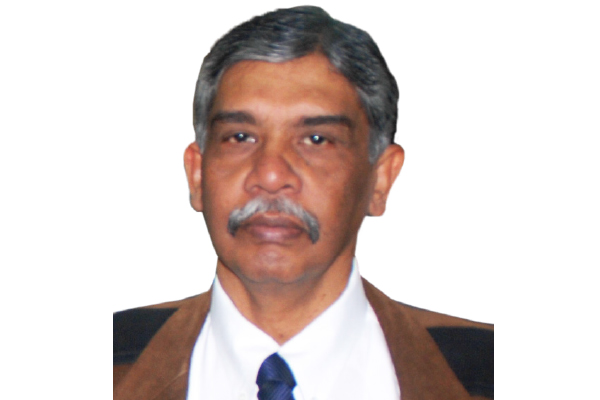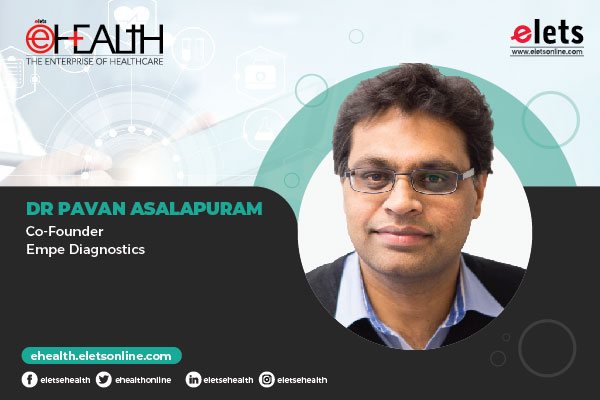Leprosy– Indian and Global Scenario
Leprosy is one of the oldest diseases known to man. Despite advances in all spheres of medical science, leprosy continues to be a public health challenge in countries like India, Brazil and Indonesia, writes Wing Commander MK Bose, Director, MRH & Projects at Malla Reddy Health City, Hyderabad.
India, Brazil and Indonesia together account for more than 80 percent of all newly registered leprosy cases, across the globe. Predictions show that although country-level elimination is reached by 2020, leprosy is likely to remain a problem in the high endemic regions (ie states, districts and provinces with multi million populations), which account for most of the cases in a country.

Statistics

In 2020, the country-level leprosy incidence has decreased to 6.2, 6.1 and 3.3 per 100,000 in India, Brazil and Indonesia, respectively, meeting the elimination target of less than 10 per 100,000. However, elimination may not be achieved in time for the high-endemic regions. The leprosy incidence in 2020 is predicted to be 16.2, 21.1 and 19.3 per 100,000 in Chhattisgarh, Pará and Madura, respectively, and the target may only be achieved in another 5 to 10 years.
Every year more than 200,000 new leprosy cases are registered globally. This number has been fairly stable over the past 8 years.

WHO has set a target to interrupt the transmission of leprosy globally by 2020. India, the world’s most affected country – reduced the number of new cases reported by more than 15 000. The number of visible deformities at the time of leprosy diagnosis is now at 1.5 per million people, making the 2020 target of less than one per million people within reach. The global prevalence at the end of 2016 was 171,948 with a registered prevalence rate of 0.23 per 10,000 population, a decrease from that in 2015.

World Leprosy Day
For more than 50 years, on the last Sunday of January, thousands of people across the globe have stopped to remember those who suffer the horrendous effects of leprosy. In 1953, a great writer, humanitarian and philanthropist, M Raoul Follereau of France, proclaimed the first World Leprosy Day to call attention to the plight of the world’s millions of people affected by this ancient, devastating disease and become prone to a disability through the threat of injury. Over the years, this observance has grown and more than 100 countries now participate in World Leprosy Day and where thousands of people across the globe have stopped to remember those who suffer the horrendous effects of leprosy.
World Leprosy Day is observed and celebrated every year on January 30, to increase the public awareness of the Leprosy or Hansen’s disease. This day was chosen in commemoration of the death of Mahatma Gandhi, the Father of the Nation; who understood the importance of leprosy. January 30, the Martyrdom Day is celebrated every year as the Anti-Leprosy Day all over India to re-memorize his selfless efforts and care for the people affected by leprosy or Hansen’s disease. It is celebrated to understand the real need to fight against leprosy.
World Leprosy Day helps to focus on the needs of some of the poorest and most marginalized people in the world – those affected by leprosy. It helps to tell the story to people who do not know that leprosy still exists and that it can now be cured. It also helps raise funds so that those with leprosy can be cured and cared for.
Leprosy has been synonymous with stigma and discrimination due to the hideous deformities it produced, the mystery around its aetiology and transmission and lack of any effective remedy till recently. The Myco bacterium leprae, targets the nervous system, especially the nerves in the cooler parts of the body – the hands, feet, and face and capable of affecting any tissue or organ: affecting the skin, eyes, testes, the peripheral nerves and mucosa of the upper respiratory tract- if not treated quickly and on time; the sufferers can become blind, lose the sensations in their hands and feet; and become prone to a disability through the threat of injury. The course that the disease progresses through puts the patient through severe mental and physical pain.
In the last two decades, the reported global prevalence of active leprosy infection has dropped by almost 90 percent by the combined efforts of the World Health Organization (WHO), local governments, health professionals, and Non Governmental Organizations (NGOs), however, a parallel drop in the incidence or New Case Detection Rate (NCDR) has not occurred. From 1994 through 2011, more than 100,000 new cases are being detected annually, of whom maximum caseload is from India.
There is a need for research on tools for early diagnosis, short and effective treatment, and prevention of deformities and disabilities. Evaluating the role of immunotherapy and immuneprophylaxis will also lead us to a better understanding of their mode of action. Further molecular analysis of Mycobacterium leprae genome may provide the requisite basis for all this. The current reality is that there is a need to sustain and provide quality leprosy services to all persons through general health services, including a good referral system. All these provisions in the integrated health care approach will go a long way in further reducing the stigma. Efforts need to be made to reduce deformity through early detection, self-care, physiotherapy and reconstructive surgery and developing sound surveillance systems. With all the remarkable achievements in the fight against leprosy, the stage is now set for the final assault. It is hoped that with the efforts of all the stakeholders and strong political will, the disease will be eradicated in the near future.
Treatment of Leprosy
Before the age of antibiotics, leprosy was treated with chaulmoogra oil, an extraction from the seeds of Hydnocarpus wightiana, with some limited success. Introduction of dapsone simplified the treatment by paving the way for ambulatory treatment and changed the face of leprosy dramatically. The initial enthusiasm of finding a cure for leprosy was dampened by relapses and emergence of drug resistance to dapsone in 1970 in up to 19 percent of patients. The first report of primary dapsone resistance was documented in 1977. There was a clear and urgent need for safe and practicable combined drug regimens effective in curing leprosy and preventing drug resistance under field conditions.
In 1981, the WHO recommended MDT. The currently recommended MDT regimen consists of medicines: dapsone, rifampicin and clofazimine. This treatment lasts for six months for pauci-bacillary and 12 months for multi-bacillary cases. MDT kills the pathogen and cures the patient. Multi drug therapy (MDT) treatment has been made available by WHO free of charge to all patients worldwide since 1995 and provides a simple yet highly effective cure for all types of leprosy. Some drugs such as rifampicin, clofazimine, and dapsone are used to treat Leprosy by the MDT. In 1993, the WHO had recommended two types of standard MDT regimen be adopted. One was a 24-month treatment for Multibacillary (MB or Lepromatous) cases using rifampicin, clofazimine, and dapsone. Another was a sixmonth treatment for Paucibacillary (PB or tuberculoid) cases, using rifampicin and dapsone. Among these rifampicin is the most important antileprosy drug and therefore is included in the treatment of both types of leprosy. Treatment of leprosy with only one anti leprosy drug will always result in the development of drug resistance to that drug. Treatment with dapsone or any other ant leprosy drug used as mono therapy should be considered an unethical practice.
The Global Leprosy Strategy 2016‒2020 is structured around following 3 core pillars:
• Pillar I: Strengthen government ownership, coordination and partnership
• Pillar II: Stop leprosy and its complications
• Pillar III: Stop discrimination and promote inclusion
Leprosy (or Hansen’s disease) is one of the oldest and notorious, but least understood diseases of man which continues to be a challenge to health worldwide, with about 250,000 new cases being currently detected every year. Mahatma Gandhi’s dream of ‘‘Empowerment of People Affected by Leprosy,’’ can only be fulfilled by removing the stigma associated with leprosy and giving them equal rights. There is a need to sustain and provide quality leprosy services to all persons through the general health system, including a good referral system. Efforts need to be made to reduce deformity through early detection, self-care, physiotherapy and reconstructive surgery and developing sound surveillance systems. It is hoped that the disease will be eradicated in the near future. The health authorities are highly capable and are fully armed, with a political will that has sustained the NLEP all these years, India could well be leprosy-free- finally
post_id:uld_count:
Cookie not set
Value 1: 0
Value 2: 10
















